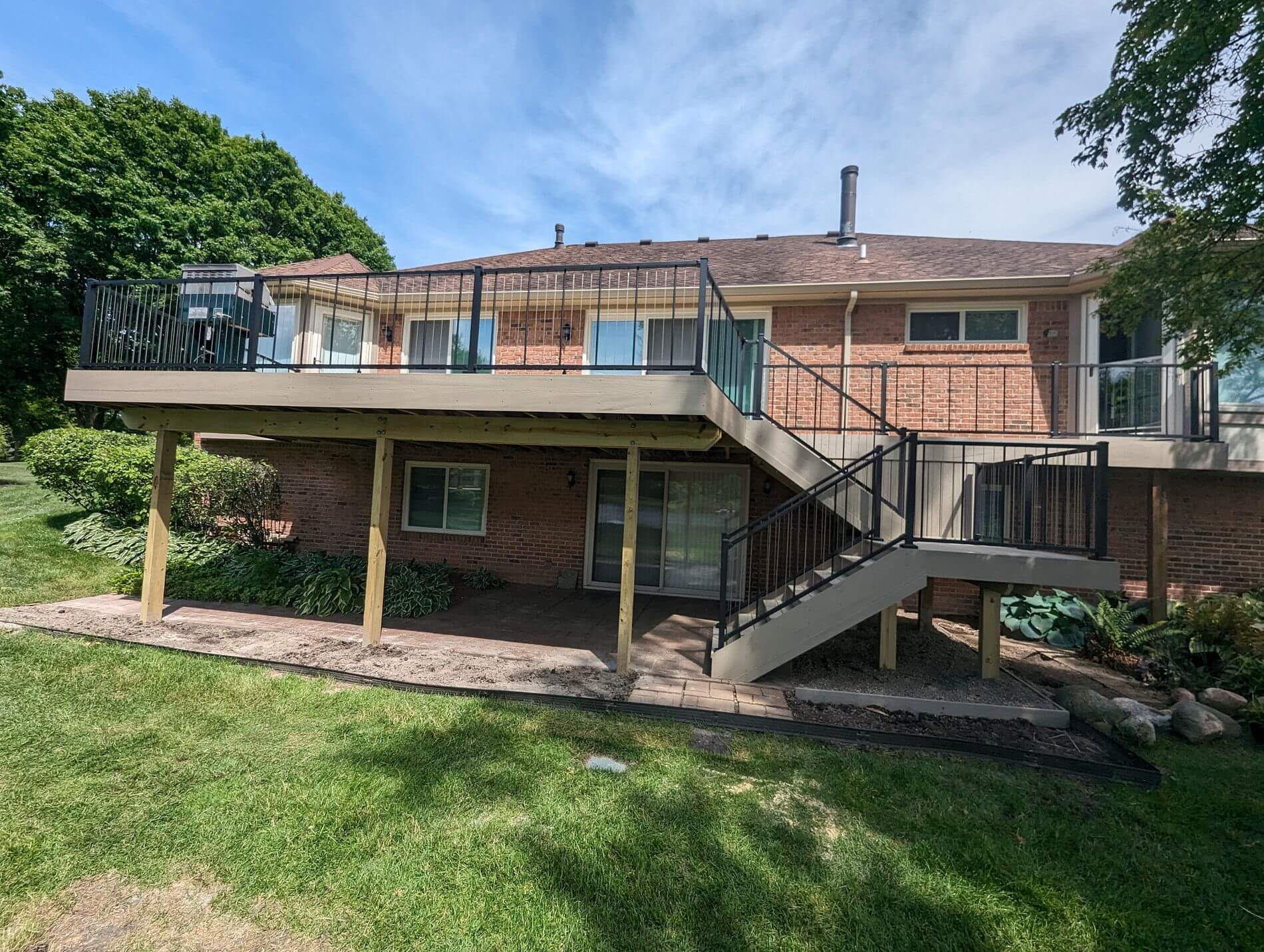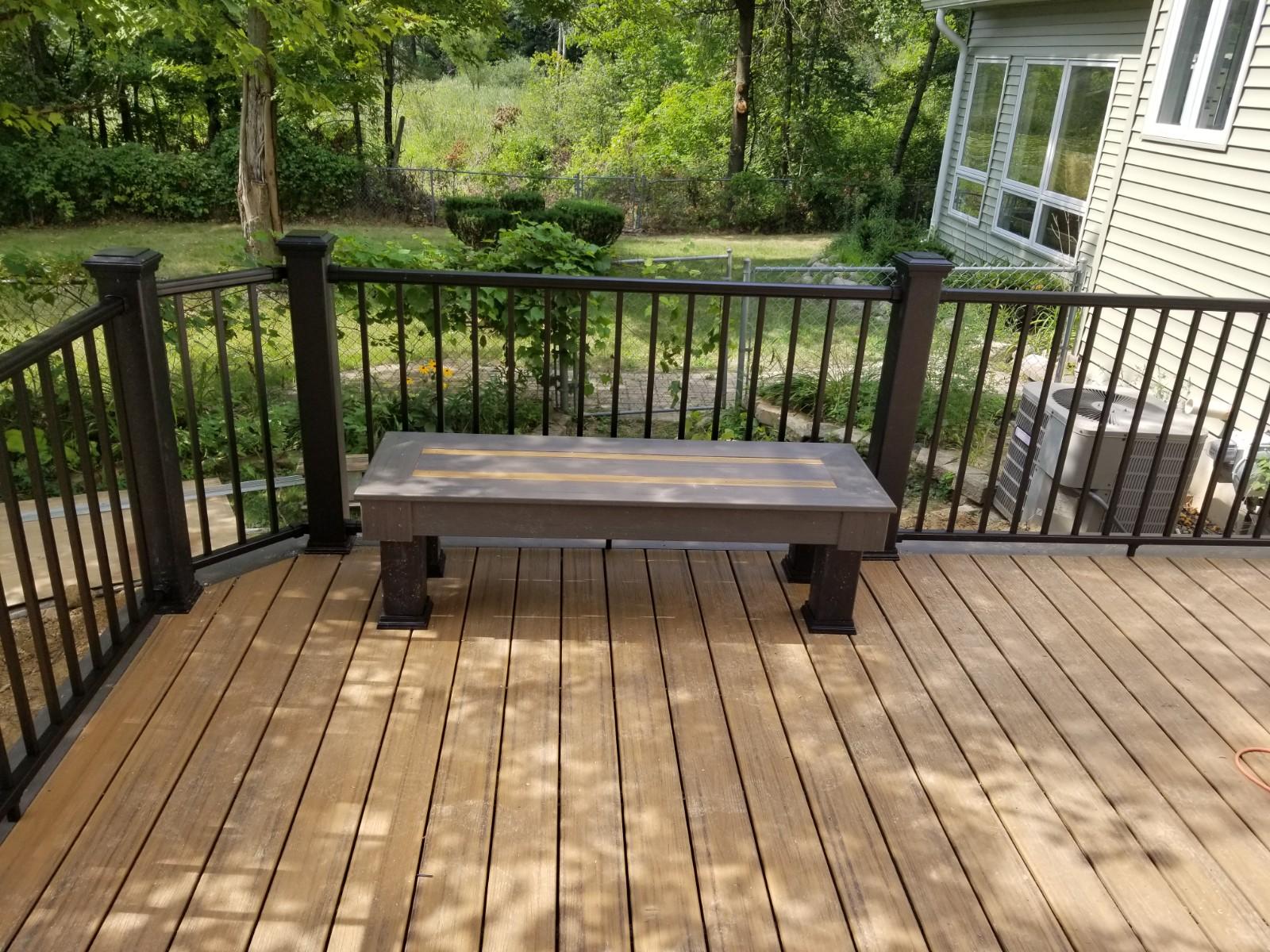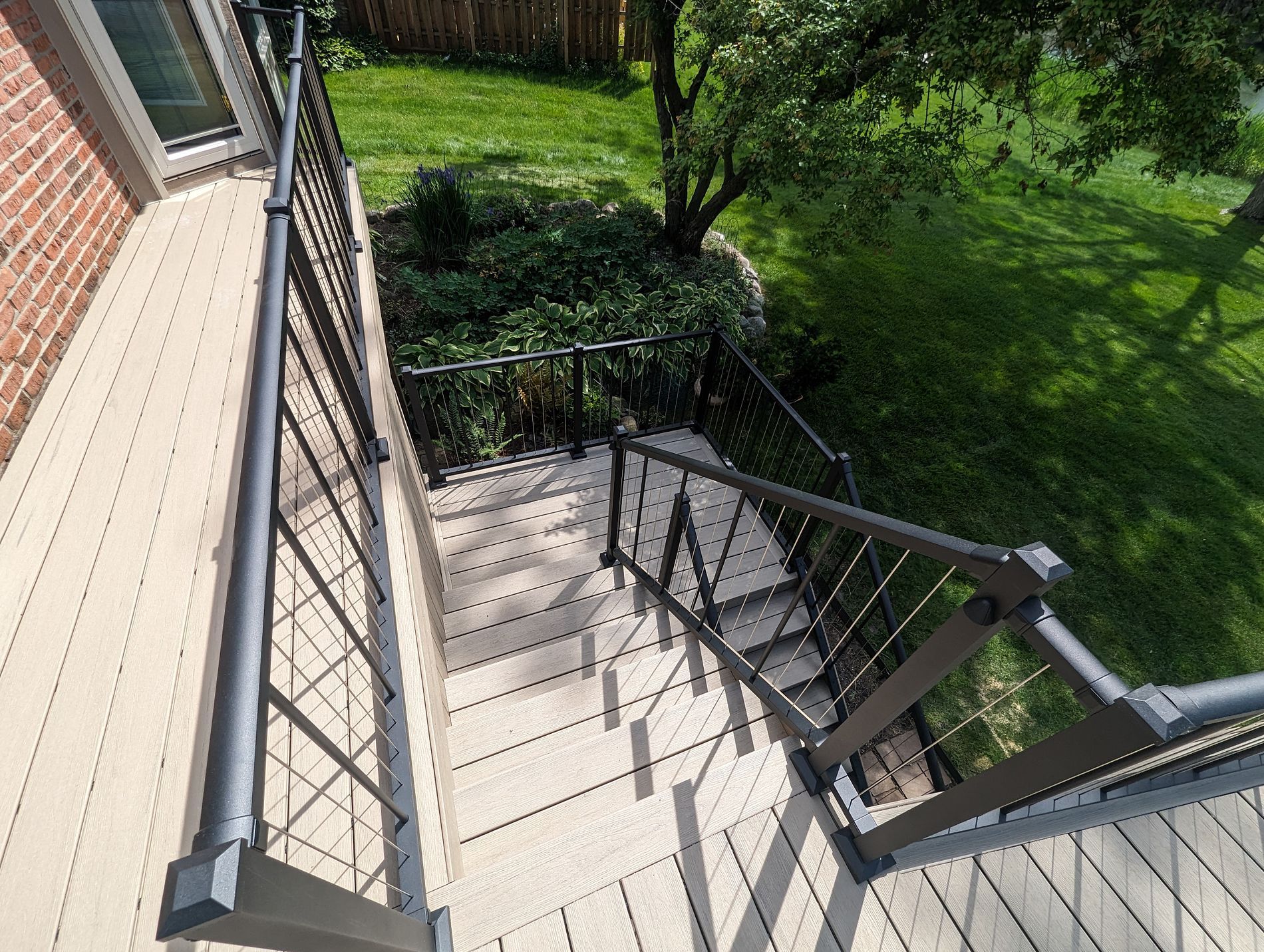deck, wood, screw, joist, fastener, plastic, plumbing, mildew, warranty, roof, lumber, heat, composite material, interior design, furniture, stain, floor, pro, decking, pressure, building material, water, mold, patio, kitchen, porch, home improvement, screwdriver, supply chain, stairs, hardwood, recycling, concrete, truck, brand, snow, customer, home automation, real estate, landscape, wall, canada, tool, ohio, drill, garden, environmentally friendly, soil, internet, vehicle, information, improvement, builders, composite, explore, installed, removing, boards, trex composite decking, fasteners, customers, flooring, credit card, new deck, insurance, polyvinyl chloride, cost, budget, national, contractor, labor costs, deck contractor, beauty, credit, aesthetics, policy, gift card, design, feedback, customer service, insect, foot, philadelphia, construction, newtechwood ultrashield, rim joist, beam, drainage, length, circular saw, tape measure, new zealand, anchor bolt, bathroom, javascript, framing, lighting, foundation, pdf, space, anchor, building code, carpentry, pier, post hole digger, masonry, retaining wall, application, deck build, apply, decks, build a deck, deck building, builder, joists, front, deck builder, card, building, mexico, height, moisture, chalk line
Can I build a new deck myself?
Building a new deck yourself is possible, but it requires careful planning, knowledge of local codes, and appropriate skills in construction. For quality results and safety, many homeowners prefer to hire professionals.
Is it necessary to seal a new deck?
Sealing a new deck is essential for its longevity and protection. It helps prevent water damage, reduces wear from UV rays, and maintains the deck’s appearance, ensuring it remains a beautiful addition to your outdoor space.
What is the best deck build for a beginner?
The best deck build for a beginner is a simple rectangular design made with pressure-treated wood. This straightforward layout minimizes complexity and allows for a focus on basic construction techniques, making it accessible and manageable for those new to deck building.
What are the basic tools needed to build a deck?
The basic tools needed to build a deck include a circular saw, drill, measuring tape, level, and a hammer. These essential tools will help ensure precise cuts and secure fastening for a durable and well-constructed deck.
How do I build a deck on a budget?
Building a deck on a budget involves careful planning and material selection. Opt for cost-effective materials like pressure-treated wood, consider DIY construction, and incorporate simpler designs to reduce costs while ensuring durability and aesthetics.
What are the different types of new deck materials?
The different types of new deck materials include wood, composite, PVC, and aluminum. Each material offers unique benefits in terms of durability, maintenance, and aesthetics, allowing homeowners to choose the best option for their outdoor space.
What are the different types of deck builds?
The different types of deck builds include wooden, composite, and PVC decks. Each type offers unique aesthetics and durability, allowing homeowners to choose a style that suits their needs and complements their outdoor spaces.
What materials are needed to build a deck?
The materials needed to build a deck include decking boards (such as wood or composite), support beams, joists, deck screws or nails, and railings. Optional materials may consist of stairs, lighting, and waterproofing products for added durability.
How much does it cost to build a new deck?
The cost to build a new deck varies based on materials, size, and design complexity. On average, homeowners in Michigan can expect to spend between $15 to $35 per square foot, depending on their choices.
How do I maintain a new deck?
Maintaining a new deck involves regular cleaning, sealing, and inspections. Use a mild soap and water solution to wash the surface, and apply a weatherproof sealant annually to protect against moisture and UV damage.
What is the process of building a new deck?
The process of building a new deck involves several key steps: assessing your project needs, designing the deck layout, securing necessary permits, preparing the site, constructing the frame, adding decking materials, and finally finishing touches like railings and stains.
What are the benefits of building a new deck?
The benefits of building a new deck include enhancing your outdoor living space, increasing property value, and providing an ideal setting for entertaining family and friends. A custom deck offers both aesthetic appeal and functionality for your home.
What is the best wood for deck building?
The best wood for deck building is typically pressure-treated lumber, as it offers durability and resistance to decay. Other popular choices include cedar and redwood, known for their aesthetic appeal and natural resistance to insects and moisture.
How to choose a deck design style?
Choosing a deck design style involves considering your home’s architecture, personal preferences, and intended use of the space. Focus on materials, colors, and features that enhance your outdoor setting while ensuring it complements your lifestyle.
Can I install a deck over concrete?
You can install a deck over concrete. However, it's essential to ensure proper drainage and ventilation to prevent moisture buildup and damage to both the deck and the underlying concrete.
What is the ideal deck height?
The ideal deck height varies based on local building codes and personal preference, but typically, decks are built 18 to 30 inches above the ground. This height ensures proper drainage and a comfortable transition between indoor and outdoor spaces.
How to ensure deck stability and safety?
Ensuring deck stability and safety involves proper installation techniques, utilizing high-quality materials, and regular maintenance checks. Reinforcing the structure, securing posts, and ensuring adequate drainage can also significantly enhance the deck's durability and safety.
What are common mistakes in deck building?
Common mistakes in deck building include inadequate planning, poor material selection, improper measurements, and neglecting local building codes. These missteps can lead to structural issues, safety hazards, and costly repairs, underscoring the importance of expert craftsmanship.
What maintenance does a new deck require?
The maintenance required for a new deck includes regular cleaning to remove debris, applying protective sealants annually, checking for loose boards or fasteners, and ensuring proper drainage to prevent water damage.
How do I add lighting to my deck?
Adding lighting to your deck can enhance its beauty and functionality. Consider installing LED deck lights, post cap lights, or string lights for ambiance, ensuring they are weather-resistant and strategically placed for best effects.
What are eco-friendly materials for decking?
Eco-friendly materials for decking include sustainably sourced wood, recycled composite materials, and bamboo. These options minimize environmental impact while providing durability and aesthetic appeal, making them ideal for eco-conscious homeowners.
How to improve deck drainage effectively?
Improving deck drainage effectively involves ensuring proper slope, installing drainage systems like gutters or downspouts, and using permeable materials. Regular maintenance and clearing debris also help maintain efficient water flow, preventing pooling and potential damage.
What are design trends for outdoor decks?
Current design trends for outdoor decks emphasize sustainability, incorporating natural materials, multi-level designs, and integrated lighting to enhance ambiance and functionality, while also focusing on creating seamless transitions between indoor and outdoor spaces.
How to build a multi-level deck?
Building a multi-level deck involves planning the design, selecting quality materials, and ensuring proper support and drainage. Begin with a solid foundation, then construct each level using sturdy framing and decking boards, ensuring safe access between levels with stairs or ramps.
What is the lifespan of typical deck materials?
The lifespan of typical deck materials varies significantly. Pressure-treated wood can last around 15 to 30 years, while composite decking may last 25 to 30 years or more, depending on maintenance and environmental factors.
Can I use reclaimed wood for decking?
Reclaimed wood can be used for decking. It not only offers a unique aesthetic and character but also promotes sustainability by reducing waste. Just ensure it is properly treated to enhance durability and prevent issues with moisture and pests.
How to incorporate planters into deck designs?
Incorporating planters into deck designs enhances aesthetics and functionality. Consider integrating built-in planter boxes along the railing or using standalone planters to create visual interest while providing greenery that complements your outdoor space.
What permits are required for deck construction?
The permits required for deck construction typically include a building permit and possibly zoning permits, which vary by locality. It's essential to check with your local municipality for specific requirements to ensure compliance.
How do I troubleshoot deck construction problems?
Troubleshooting deck construction problems involves assessing the issue, such as uneven support or gaps in boards, and ensuring proper materials and techniques were used. Adjust or reinforce the affected areas and consult a professional if needed for complex issues.
What finishes are best for protecting decks?
The best finishes for protecting decks include sealants, stains, and paints. Sealants provide a waterproof barrier, stains enhance the wood's natural beauty while adding color, and paints offer a durable, weather-resistant option suitable for various styles.



